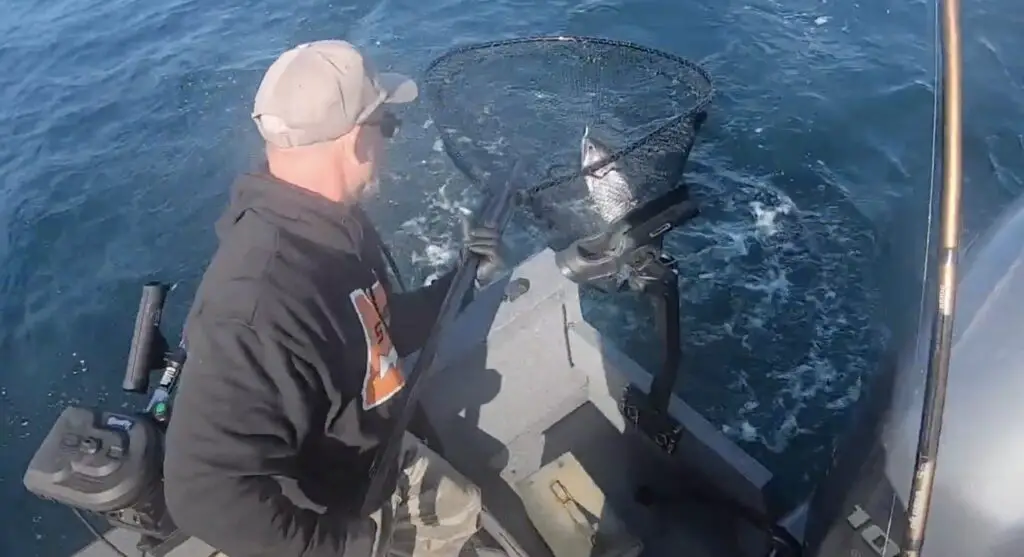
Tracking all of the news and developments as the 2022 Washington Coast Salmon Season takes shape through the North of Falcon process and eventually becomes our season for fishing the Washington Coast (Marine Areas 1 -4) for Salmon.
Preliminary Salmon Seasons for the Washington Coast
As just announced by WDFW on 4/12/2022:
Coho are expected to return in large numbers to the Washington coast in 2022, and in coastal marine areas coho quotas reflect those improved forecasts. Fishery managers agreed during this week’s PFMC meeting to recreational ocean quotas of 27,000 Chinook and 168,000 marked coho, more than double the 2021 coho quota.
LaPush (Marine Area 3) and Neah Bay (Marine Area 4) will open for salmon retention beginning June 18, followed by Ilwaco (Marine Area 1) on June 25 and Westport-Ocean Shores (Marine Area 2) on July 2. All areas are scheduled to remain open until Sept. 30 or until quotas are met, with species and size restrictions dependent on the area.
WDFW email on 4/12/2022
It looks like season setters are being slightly cautious with regards to Chinook opportunity, but optimistic regarding coho. Either way these seasons represent significant time on the water, and expanded opportunities compared to 2021, especially with regards to Coho.
Washington Coast Salmon Season options being reviewed
UPDATE: Looks like we have something close to Option 1 for Coho and Option 3 for Chinook!
Option 1: 32,500 Chinook and 176,400 marked coho. This option includes Chinook and hatchery coho fisheries beginning June 18 in all areas.
Columbia River area, Westport, La Push and Neah Bay (Marine Areas 1, 2, 3 and 4): June 18-Sept. 30 Chinook and marked coho fishery. No Chinook retention east of the Bonilla-Tatoosh line beginning Aug. 1.
Option 2: 30,000 Chinook and 155,400 marked coho. In this option fisheries open June 25.
Columbia River area, Westport, La Push and Neah Bay (Marine Areas 1, 2, 3 and 4): June 25-Sept. 30 Chinook and marked coho fishery. No Chinook retention east of the Bonilla-Tatoosh line beginning Aug. 1.
Option 3: 26,500 Chinook and 134,400 marked coho. In this option, fisheries open at different times in June, and close earlier in September.
La Push and Neah Bay (Marine Areas 3 and 4): June 18-Sept. 18 Chinook and marked coho fishery. No Chinook retention east of the Bonilla-Tatoosh line beginning Aug. 1.
Westport (Marine Area 2): June 26-Sept. 18 Chinook and marked coho fishery. This area would be open five days per week (Sunday-Thursday) under this alternative.
Columbia River Area (Marine Area 1): June 26-Sept. 18 Chinook and marked coho fishery.
WDFW email from 3/15/2022
I’m not sure what the tradeoffs are on the above 3 options…I’m imagining option 2 is the most likely choice (typically how these things go)…
Washington Coast Salmon Forecast Revealed
For a full length detailed blog post on the forecast that was shared, click here.
Below are some of the highlights:
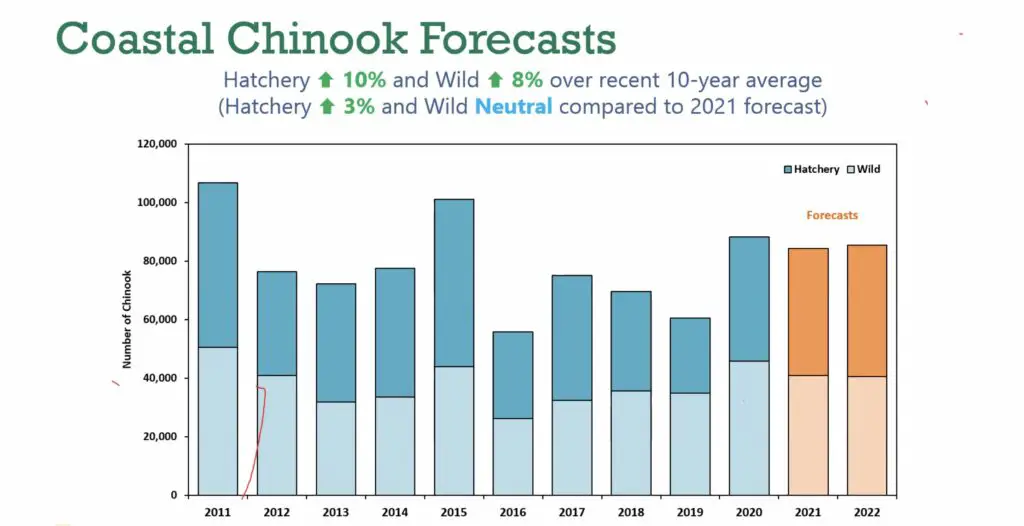
Coastal chinook stocks are not as important to overall ocean chinook abundance, which is driven much more by the size of the run headed to the Columbia River. The coastal chinook stocks are important as they relate to how seasons get set to protect depleted or threatened stocks of fish. Overall the health of coastal chinook looks steady heading into the 2022 return.
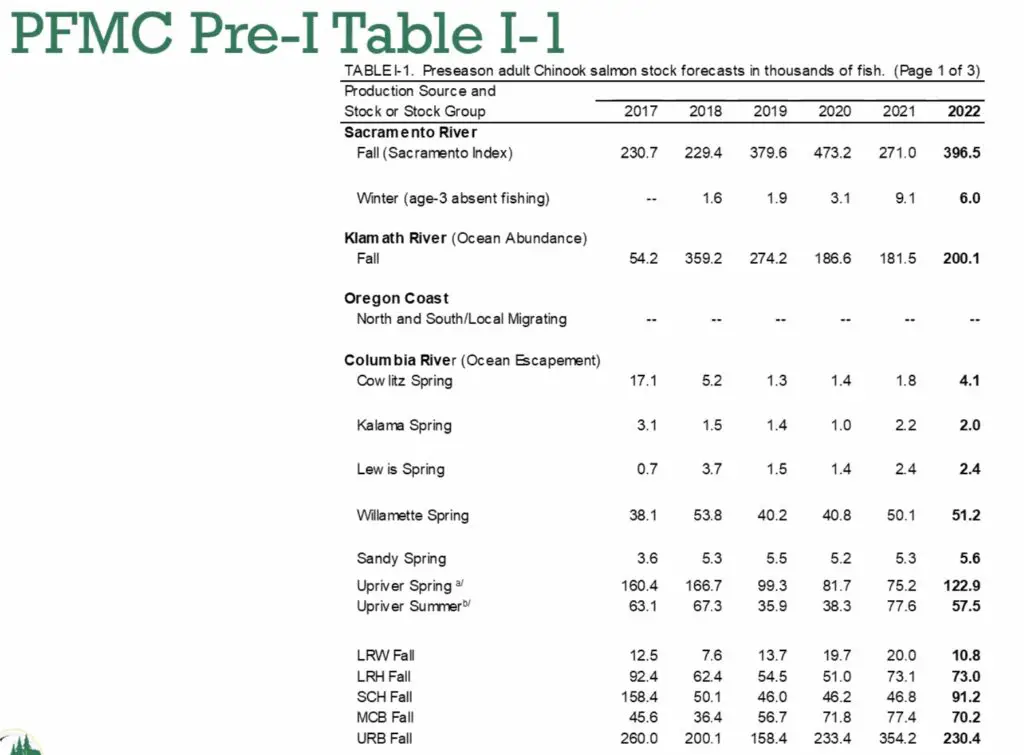
The total expected run size for Fall Chinook in the Columbia River is 475k compared to a 2021 runsize of 571k. So slightly down, but still healthy and should provide good chinook fishing on the ocean.
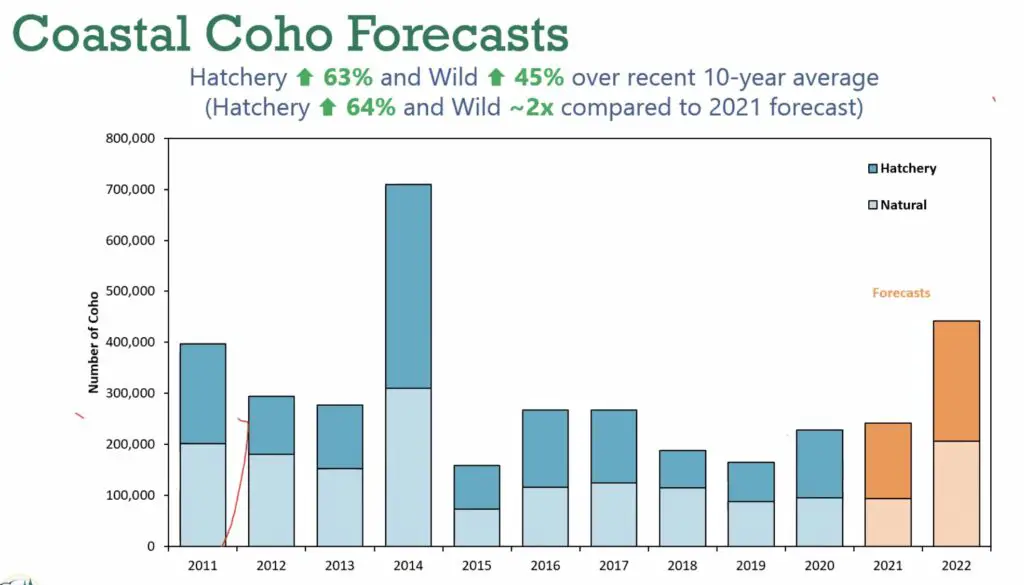
Coastal coho also looks to be bouncing back nicely from 2015 and 2019 lows. This is especially important as recent seasons have been constrained by impact concerns on Queets River coho. In 2022, Queets coho are expected to make a strong comeback.
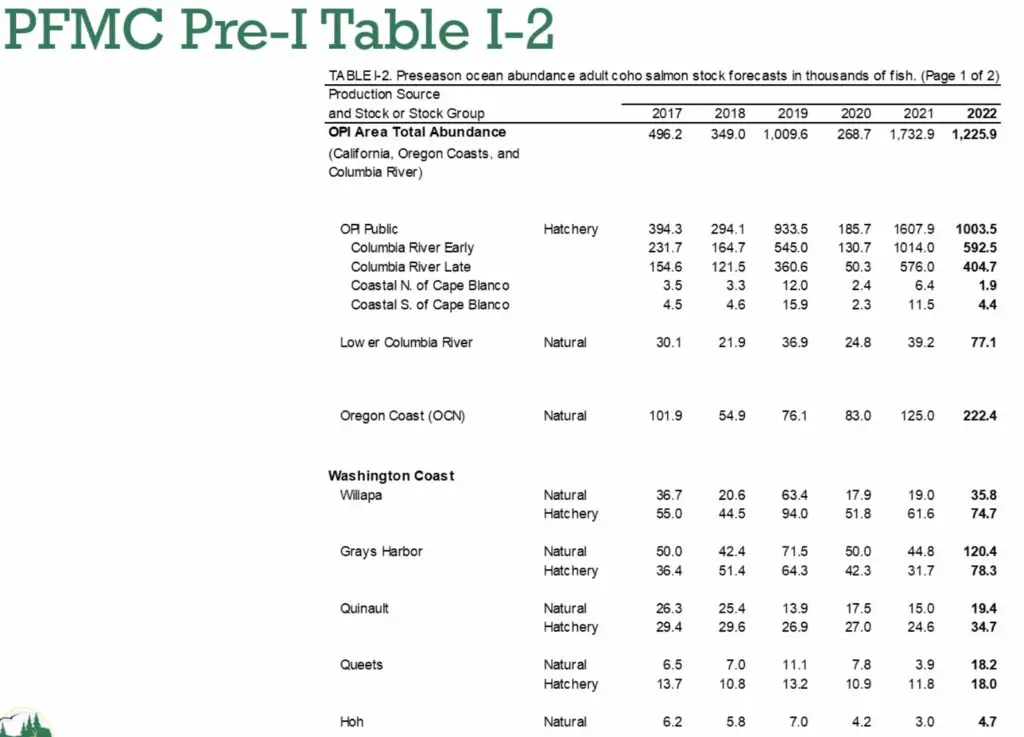
While the Columbia River forecast is not nearly as high as last year, forecasting over a million coho is still a great number. The coast and especially Grays Harbor rivers look spectacular for coho forecasts.